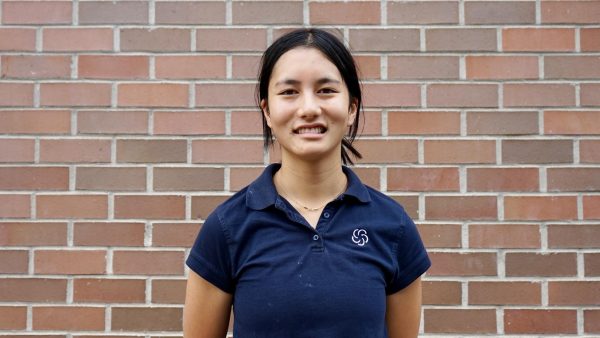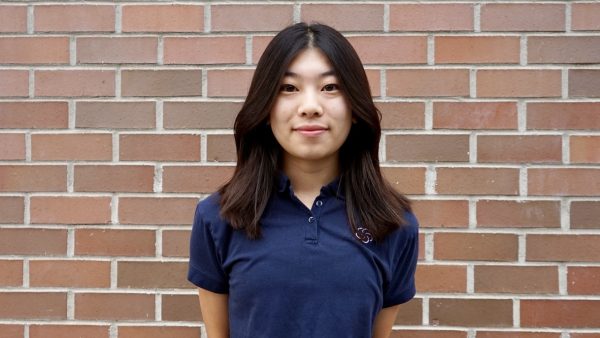Each Castilleja student’s inbox contains a dozen Google Forms for events like Beyond the Circle, Global Week and student government elections. However, you may not know about the manual placement process behind the scenes and the derivation and theory of the ranked voting method.
In Angela Price’s Introductory Calculus class, she outlined two main voting systems: plurality and ranked choice. She explained that plurality only looks at the first-place choice.
Let’s say there are four choices: A receives 20 votes, B receives 15 votes, C receives 31 votes and D receives 27 votes. C is declared the winner. However, if you sum up A, B and D’s votes, 62 people don’t get what they want, and only 31 people do get what they want; this is not an accurate majority.
In the fall semester of the 2024-2025 school year, the Class of 2027 faced issues with this system in their government elections. Jeff Mayfield, class dean, stated that there was voter fatigue as several ballots needed to be sent out because no winner stood out. “It was just ‘vote for one of the candidates,’ and I just gave it to [the class of ’27] again, and people started leaning towards other people,” Mayfield said.
Several other teachers used this plurality system last semester, including the Class of 2026 Dean Rigile Ortega. According to Mayfield, this sudden shift was due to former Dean of Students Eve Kulbeida’s proposal that the presidential candidate must receive more than 50% of the votes. “Ms. Kulbeida was adamant about the notion that the president should get 50% of the vote or more than 50% of the vote,” Mayfield said. The previous method was a rank voting process, where each ballot considers each choice, and then the winner can be arrived at through elimination, a points system or pairing, as explained by Price.
“I was trying to stay in alignment with something that Ms. Kulbeida had proposed when she was dean of students, and that went against what we had been doing prior to that, when Ms. Bagnola was Dean of Students,” Mayfield said. According to Mayfield, Kimberly Bagnola created a handbook on how to conduct the ranked voting process for student governments.
However, starting the spring semester of this year, Mayfield decided to use a modified version of the tried-and-true ranked voting system; he modified it so that the final runoff vote would require a single candidate to receive more than 50% of the votes, as Kulbeida proposed.
“Each time you get voted here, let’s say you get three points if you get first choice, one point if you get second choice. So we count up all your first choices and that’s going to be x times 3, and all your second choices – that’s x times 1. Add up the 3x and the 1x so to speak, and that’s going to give you a total. And that number determines how high you rise,” Mayfield explained. This process determines the top two that take you to the final runoff. Mayfield effectively combined the democracy and efficiency of both Kulbeida and Bagnola’s systems for student government elections.
Beyond class elections, the director of the ACE Center, Jessica Yonzon, manages the schoolwide workshop placements. Yonzon shed light on the two-year-old workshop format used for Global Week and the presidential election. She made it clear in an interview that she prioritizes the students’ choices and opinions. “The reason for this is that we’re trying to give the students voice, choice and some agency in choosing what they want to explore,” Yonzon said.
As responses are also formatted in the ranked voting system, Yonzon explained, “The ACE Center team collectively works on workshop placements for ACE programs, and the total time it takes varies depending on availability.” This process takes a few hours. “It’s not a quick process because if we are taking the time to send out the form, and students are taking the time to fill it out, we want to honor that,” Yonzon said.
Yonzon explained the placement process: “It depends on how the survey is. If it is a range where people can rate it from one to five, then you try to see, ‘How many picked ‘five’ for this workshop?’” Of course, Yonzon said they cannot place everyone who ranks the same workshop as their top choice into that workshop, so they look at your second top choice next. Each entry compiled is analyzed one at a time using this method.
Some processes of student democracy have stayed the same, and some are the result of systems much newer than one might’ve thought. For example, according to Mayfield, campaigning has never been allowed for student elections for the sake of equity, and the ranked voting system has existed since Bagnola was the Dean of Students. However, the student government election process is now one that combines Kulbeida’s proposal as well, maintaining the efficiency of ranked voting.
The takeaway from Price’s lecture was that each way to analyze a ranked vote can actually achieve different results. So, as programs evolve at Castilleja, it will be interesting to see how different methods may be necessary in the future. With the current systems we have now, it’s important to appreciate all the time and effort behind the scenes for the sake of making each student’s voice count.




